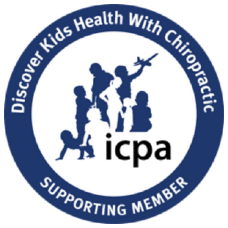Pediatric Chiropractic Care in Wheaton, IL
 We can all relate to the everyday stress adults put on their bodies, but sometimes it's hard to imagine that children might also need chiropractic care. After all, they haven't accumulated years of sports traumas, hard labor, repetitive motions, staring at a computer, and the other myriad of things that can put stress on our bodies.
We can all relate to the everyday stress adults put on their bodies, but sometimes it's hard to imagine that children might also need chiropractic care. After all, they haven't accumulated years of sports traumas, hard labor, repetitive motions, staring at a computer, and the other myriad of things that can put stress on our bodies.
But, kids are constantly putting stress on their joints. Sometimes, this stress is in the form of activities, whether they be organized sports or just running and jumping around the house. Other times, the stress might involve sitting in a car seat or in front of a screen for extended periods of time (just trying explaining ergonomics to a toddler or a teenager). Some of these stressors will undoubtedly result in hypomobility of joints (i.e., a joint moving less than its designed range of motion), especially those in the spine. Children are resilient. Fixations can work themselves out, but like everyone else, sometimes kids need a little help.
For those who like the details...
We often think of degeneration taking years, but changes can occur much more quickly. Degenerative changes in the zygapophyseal joint (z-joint) of the spine may start within as little as four weeks of hypomobility. Adhesions, which are bands of scar tissue, can start building around that joint after about 8-12 weeks of hypomobility. These findings aren't meant to instill fear. In fact for many, these changes may cause no noticeable symptoms and simply act as building blocks for degeneration that we notice much later in life. But it is important to understand that movement of joints sends a host of input to the brain. If a joint is fixated and cannot move in its full physiological range, the brain is deprived of some of that input. The more "good" input the brain receives, such as changing joint position, rather than "bad" input, such as irritation, the better this is for development.
Additionally, movement of the sacrum helps to act as a pump for cerebrospinal fluid (CSF). The CSF has 3 primary functions - protection by way of shock absorption around the brain, supplying nourishment to the brain, and removing waste from the brain. Without proper movement of the sacrum, the force of that pump decreases which means the speed at which the CSF can clear out waste from and provide nutrients to the brain is decreased. This is particularly important given that the brain uses about 20% of the body's oxygen and energy, thus requiring quite a bit of nutrients and waste removal.
This is one way that fixations can lead to both expected and unexpected consequences. The brain plays a role in every function of your body, and how each person manifests any stress to the brain, whether it be slower than desired waste removal and nutrient distribution or a decreased amount of input from a fixated joint, is different. Because every body is different.
What does chiropractic care look like for children?
An infant is born with about 300 bones, some of them cartilaginous. By the time they reach adulthood, bones have developed and fused to become 206 separate bones. That is just one of many differences between children and adults. When adjusting children, differences have to be take into account. Several techniques can be used to adjust a child, but the factors that never change are that the adjustments are VERY gentle and safe. When adjusting young children, often sustained pressure on a specific location where a fixation is found is all that is needed. The amount of pressure used is often compared to the pressure used to check the ripeness of a tomato. Very gentle, very safe.
At times, chiropractors may use equipment or instruments to assist with the adjustment. An activator, drop table, or drop pieces are examples of these. These too are very gentle, but the clicking sounds may startle a child who is unfamiliar with the equipment. For that reason, at Kennedy Family Chiropractic, equipment is always demonstrated to the patients and parents before using them. We may even have the patient "adjust" a doll or his or her chiropractor to help the patient feel more comfortable with the equipment. The goal is to make the entire family relaxed while they are in the office so that there is no additional stress for the patients.
If you have any questions regarding pediatric chiropractic care, schedule a complimentary consultation or contact the office at (630) 384-9305. Dr. Kennedy would be happy to hear from you!
- Cramer, Gregory D, et al. “Degenerative Changes Following Spinal Fixation in a Small Animal Model.†Journal of Manipulative and Physiological Therapeutics, vol. 27, no. 3, 2004, pp. 141–154., doi:10.1016/j.jmpt.2003.12.025.
- Cramer, Gregory D., et al. “Zygapophyseal Joint Adhesions After Induced Hypomobility.†Journal of Manipulative and Physiological Therapeutics, vol. 33, no. 7, Sept. 2010, pp. 508–518., doi:10.1016/j.jmpt.2010.08.002.



